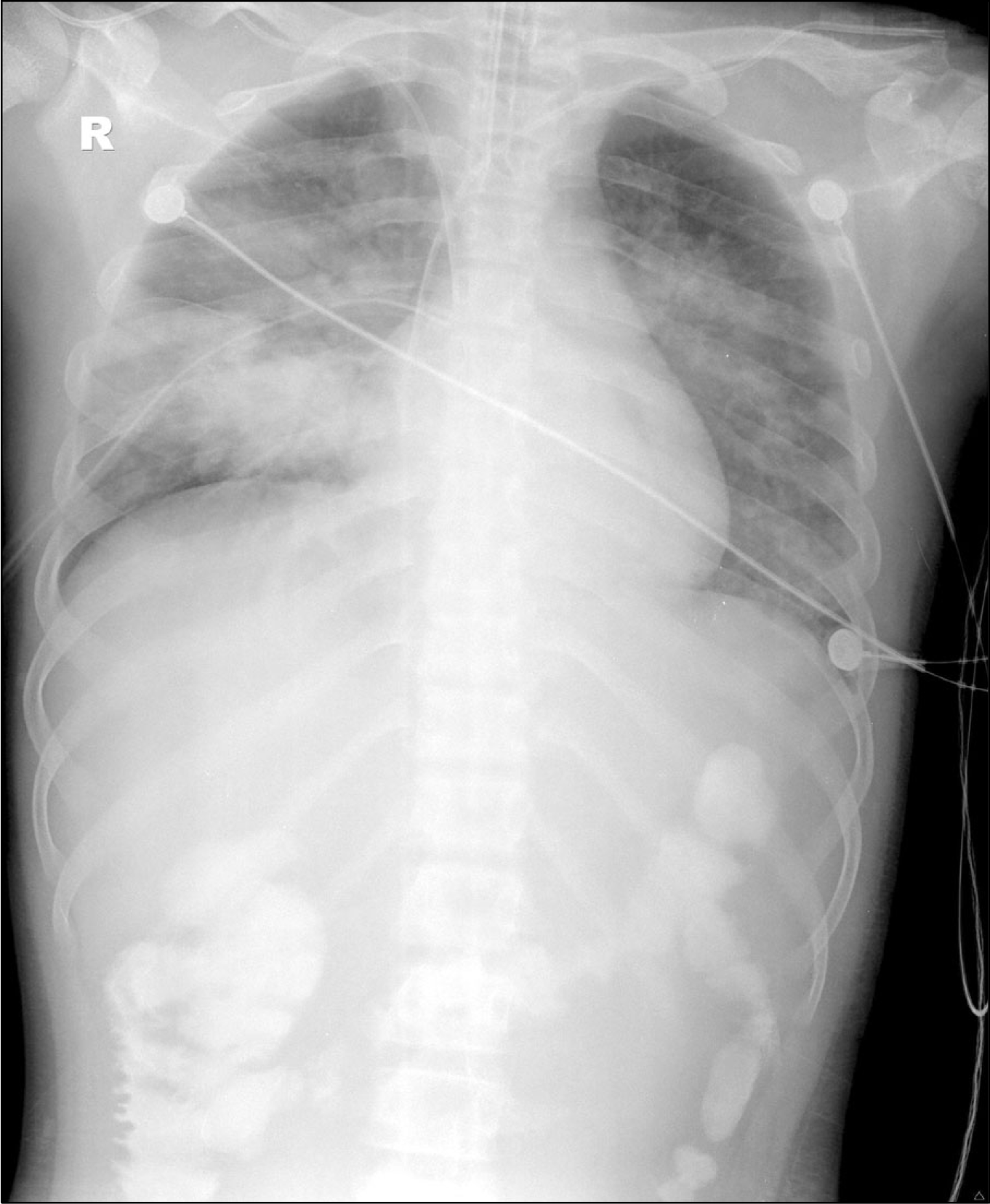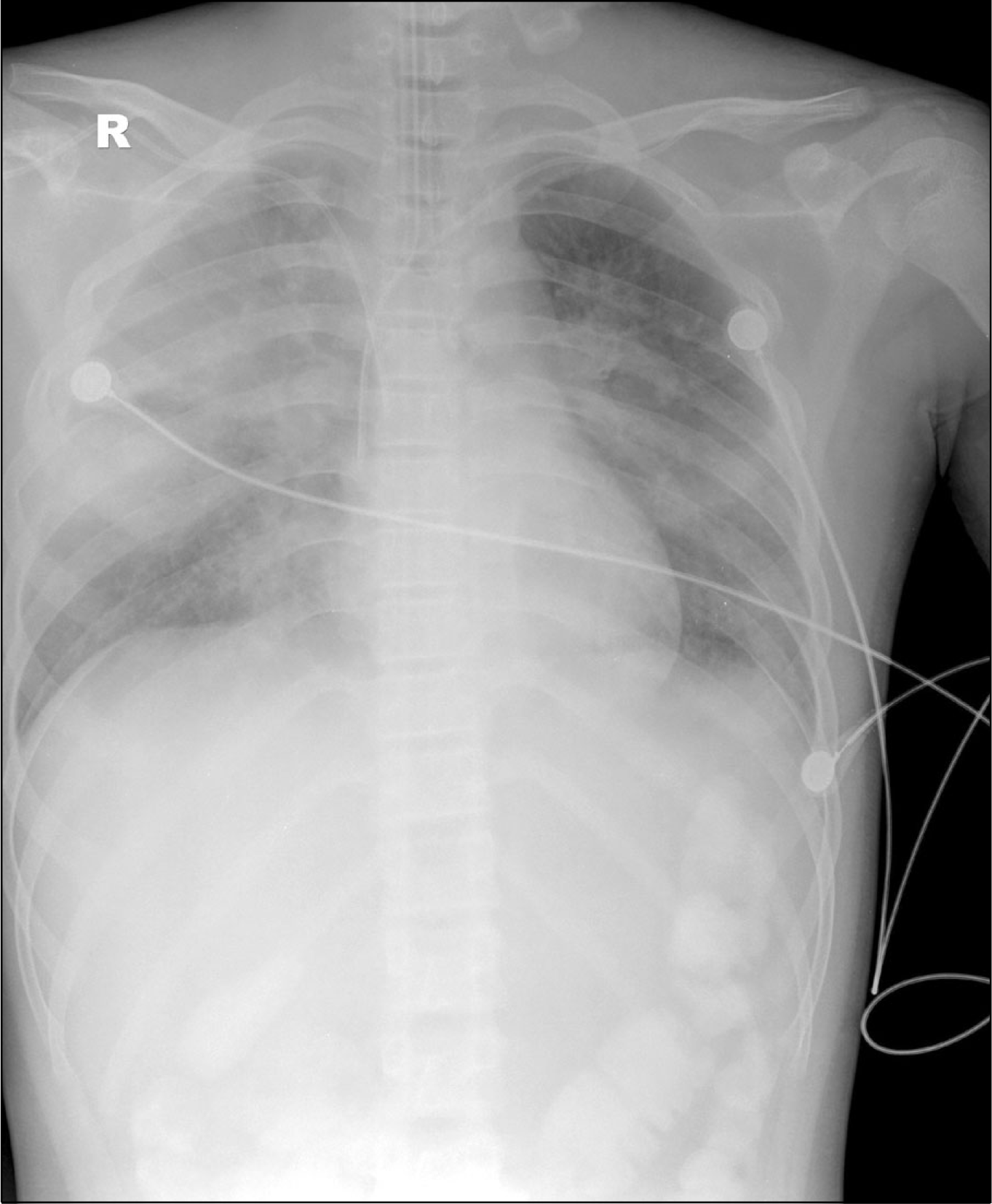Abstract
Potential diseased donors manifest altered physiological changes associated with pulmonary edema, profound hemodynamic and metabolic abnormalities. These derangements may be more significant after apnea tests which result in severe hypoxemia and cardiovascular complications. Nitric oxide (NO) inhalation therapy can be applied following apnea tests in the brain-dead donor whose ventilator support has been maintained with high positive end-expiratory pressure. Inhalation of NO gas causes selective dilation of blood vessels in only those lung segments that are actively participating in gas exchange (oxygen and carbon dioxide) at the alveolar capillary level. In other words, this increases the blood flow to areas of the lung where oxygen is being provided and thus improves oxygen levels in the body. We report on the case of a 14-year-old organ donor with inhaled NO therapy after apnea testing. The duration of NO inhalation therapy was 14 hours. This deceased donor, who suffered with severe hypoxemia and hemodynamic instability after apnea tests, improved after NO gas therapy and adequate vasoactive drugs. NO gas therapy will be helpful for improving oxygen delivery to pulmonary vessels. Two kidneys and one liver were successfully retrieved from donors. These recipients had well preserved function of allografts. Therefore, NO inhalation can be help¬ ful in improvement of hypoxemia and increasing organ availability in deceased organ donors.
Go to : 
References
1). A definition of irreversible coma. Report of the Ad Hoc Committee of the Harvard Medical School to Examine the Definition of Brain Death. JAMA. 1968; 205:337–40.
2). Power BM, Van Heerden PV. The physiological changes associated with brain death: current concepts and implications for treatment of the brain dead organ donor. Anaesth Intensive Care. 1995; 23:26–36.
3). Bang EC, Koh SO, Han S, Kim JH, Nam SH. Management of the brain-dead organ donors. Korean Soc Crit Care Med. 1996; 11:171–7. (방은치, 고신옥, 한식, 김진호, 남순호. 장기 공여를 위한 뇌사 환자의 관리. 대한중환자의학회지 1996: 11; 171–7.).
4). Salim A, Martin M, Brown C, Belzberg H, Rhee P, Demetriades D. Complications of brain death: frequency and impact on organ retrieval. Am Surg. 2006; 72:377–81.

5). Marini JJ. How to recruit the injured lung. Minerva Anestesiol. 2003; 69:193–200.
7). Prodhan P, Casavant D, Medlock MD, Yager P, Kim J, Noviski N. Inhaled nitric oxide in neurogenic cardiopulmonary dysfunction: implications for organ donation. Transplant Proc. 2004; 36:2570–2.

8). Park ES, Son HW, Lee AR, Lee SH, Kim AS, Park SE, et al. Inhaled nitric oxide for the brain dead donor with neurogenic pulmonary edema during anesthesia for organ donation: a case report. Korean J Anesthesiol. 2014; 67:133–8.

9). Steudel W, Hurford WE, Zapol WM. Inhaled nitric oxide: basic biology and clinical applications. Anesthesiology. 1999; 91:1090–121.
10). Rossaint R, Falke KJ, Lopez F, Slama K, Pison U, Zapol WM. Inhaled nitric oxide for the adult respiratory distress syndrome. N Engl J Med. 1993; 328:399–405.

11). Taylor RW, Zimmerman JL, Dellinger RP, Straube RC, Criner GJ, Davis K Jr, et al. Low-dose inhaled nitric oxide in patients with acute lung injury: a randomized controlled trial. JAMA. 2004; 291:1603–9.
Go to : 
Table 1.
Arterial blood gas analysis and PaO2/FiO2 ratio




 PDF
PDF ePub
ePub Citation
Citation Print
Print




 XML Download
XML Download